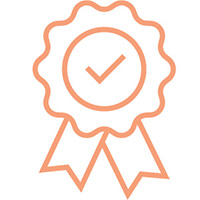Label Rouge Scottish Salmon Provenance
In the beginning, the purity of a natural landscape
A wild land
Highlands and Islands
Scotland is a beautiful country. A trip to the Highlands and Islands is all you need to be convinced. Here, the pristine sea is all around, but a few hundred metres from the coast you will also discover magnificent mountains with towering summits.
This region, where the climate is wild and inhospitable for mankind, is the ideal location for farming Salmo salar or Atlantic salmon and, in particular, Label Rouge Scottish salmon.
Water from the falls and rivers descending from the mountain peaks provides the perfect environment for young salmon to grow in freshwater until they are transferred to sea.
Then follow the marine lochs. This dynamic environment, tossed by tides and currents, will encourage the salmon to swim constantly, developing firm flesh and low fat levels, two significant elements of the superior quality of Label Rouge Scottish salmon.

Sustainable development
Environmental conservation, a vital part of sustainable development
For many remote, rural localities, sustainable salmon farming is of vital importance. As responsible operators, Label Rouge Scottish salmon farmers support the development of these regions and are committed to sustainable growth and environmental conservation.
The future of salmon farming depends on each stage of production complying with the highest standards to prevent negative effects on the environment in which the fish grow and thrive.
Modern farming techniques, alongside traditional production methods, ensure a balanced approach which guarantees superior quality.
Learn more about aquaculture in Scotland: https://www.salmonscotland.co.uk

Regulation
The most strictly regulated aquaculture sector in the world
Aquaculture is subject to a wide range of national and European regulations which are continuously evolving to take account of technological progress and the changing expectations of the end user - the consumer.
The Scottish salmon farming industry is the most strictly regulated aquaculture industry in the world, governed by over 50 regulations from ten different official bodies in the UK alone.
Official authorisations are required at each stage of production and Label Rouge Scottish salmon producers must comply with the standards of the Code of Good Practice for Scottish Finfish Aquaculture.

